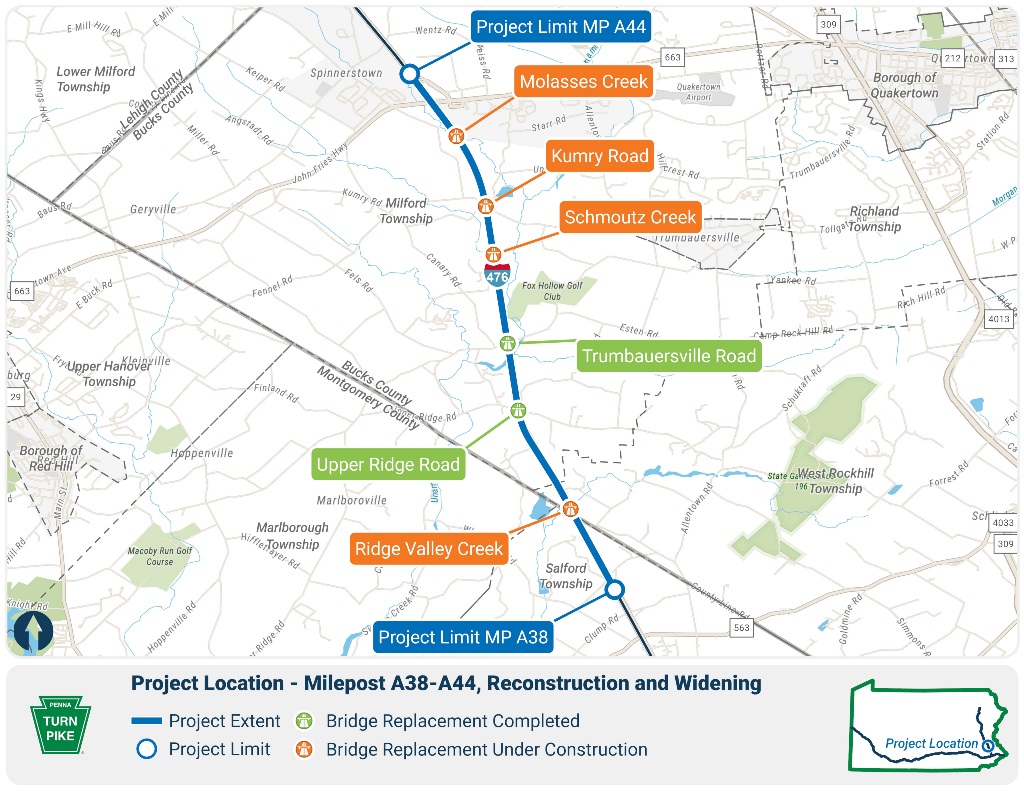Project Overview
This project will reconstruct and widen six miles of the Pennsylvania Turnpike from milepost A38 to milepost A44 in Salford, West Rockhill, and Milford Townships in Bucks County. The roadway will be widened from four lanes to six, featuring three 12-foot-wide travel lanes in each direction, a 26-foot median, and 12-foot-wide shoulders.
The project also involves replacing mainline bridges over local roads, lengthening culverts, and improving stormwater drainage through the area. As part of this multi-phase project, the PA Turnpike has advanced four overhead bridge replacements at Steinsburg Road (SR 4059), Trumbauersville Road (SR 4051), Upper Ridge Road (SR 4033), and Unami Creek Bridge Replacement. Construction began in April 2022 and is expected to be completed by fall 2026.
Upon completion, this reconstruction and widening project will enhance safety and mobility for travelers on this section of the interstate.


